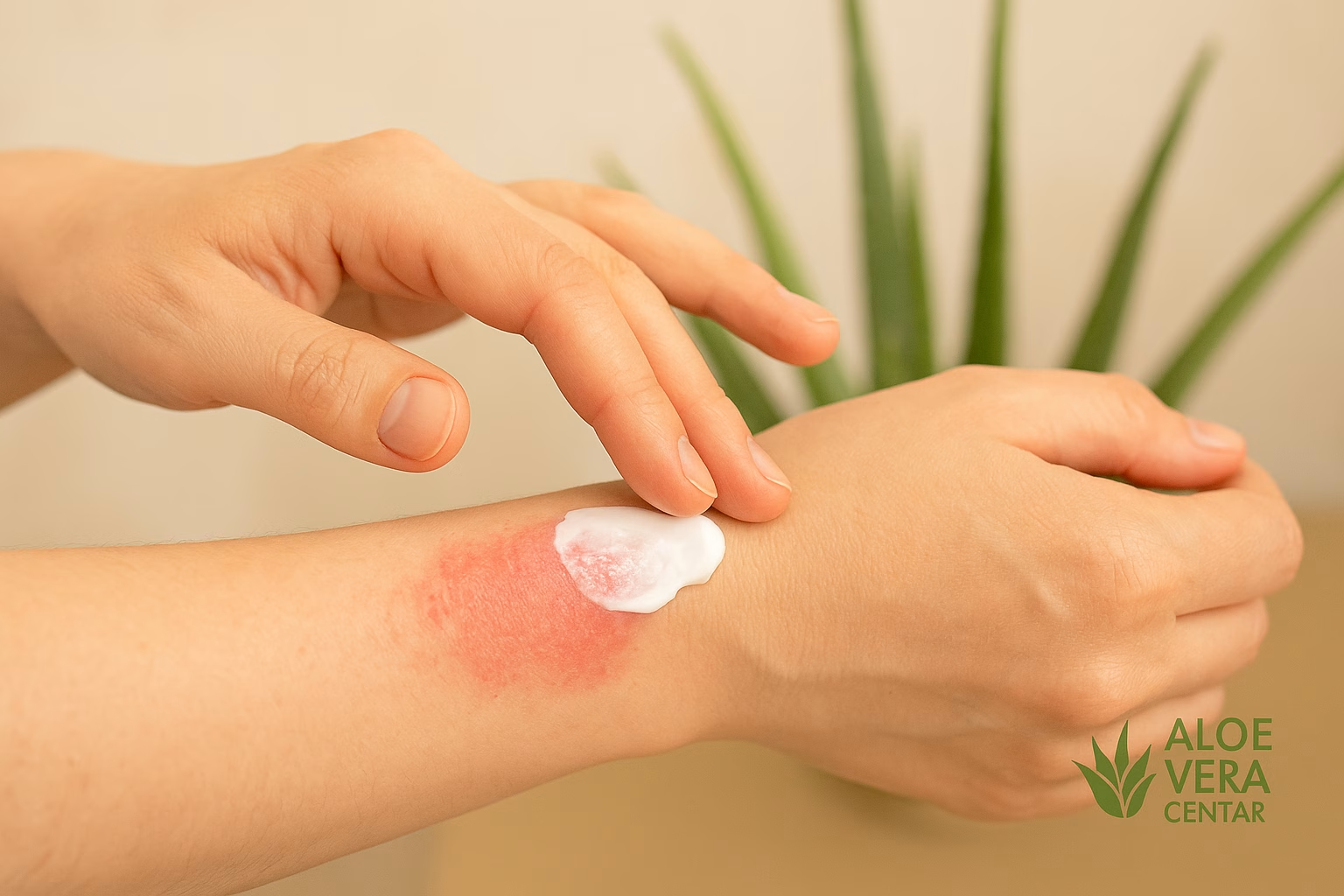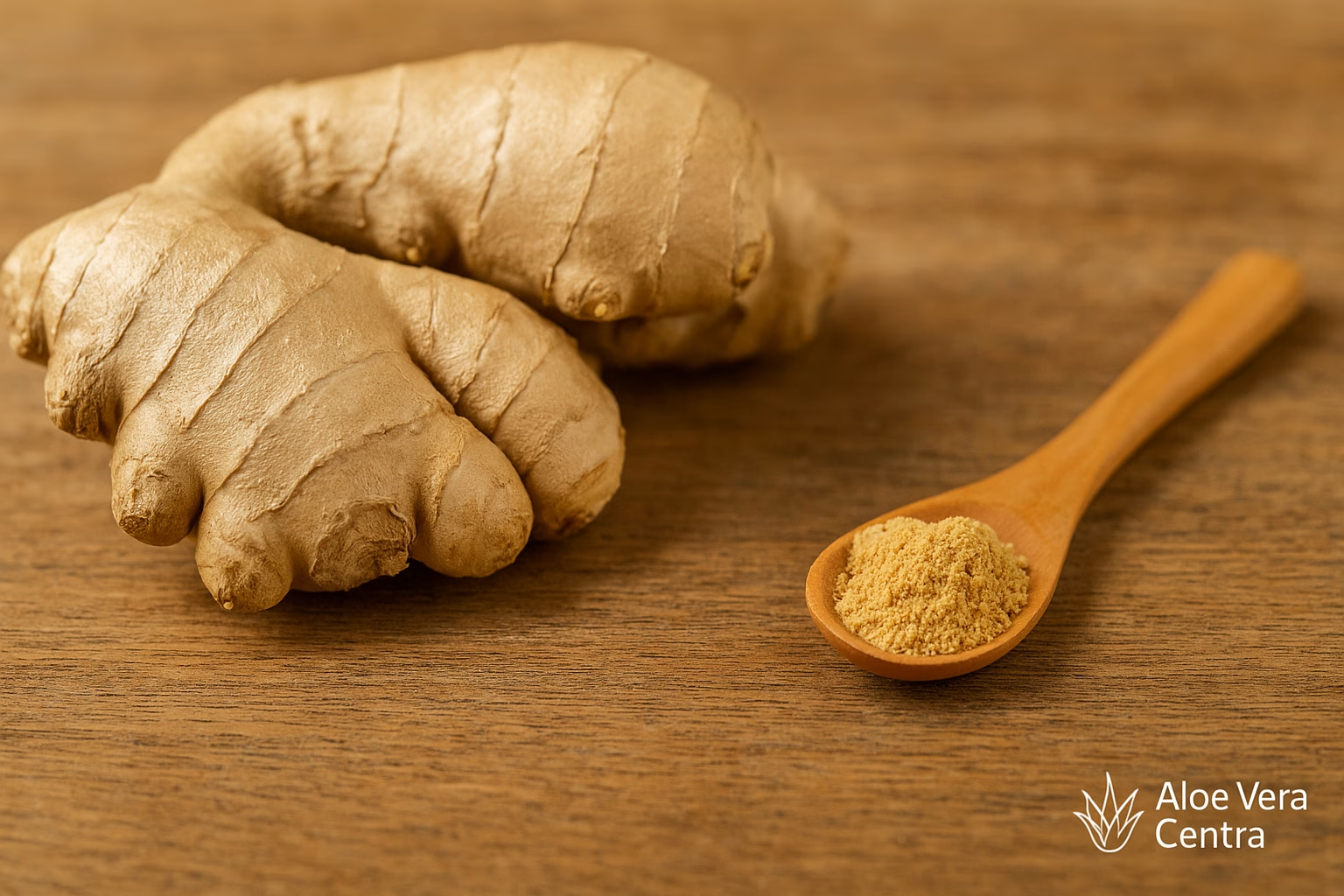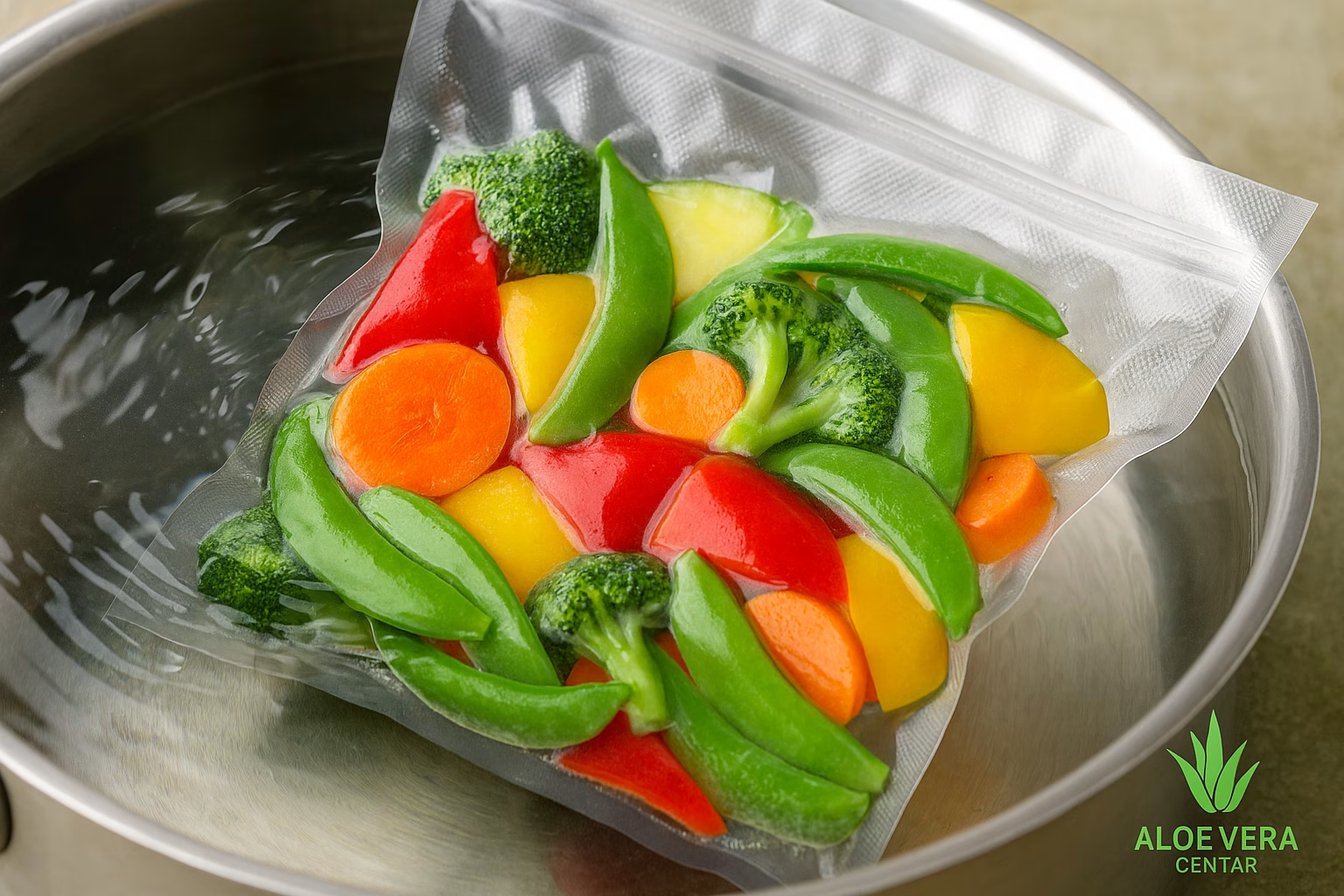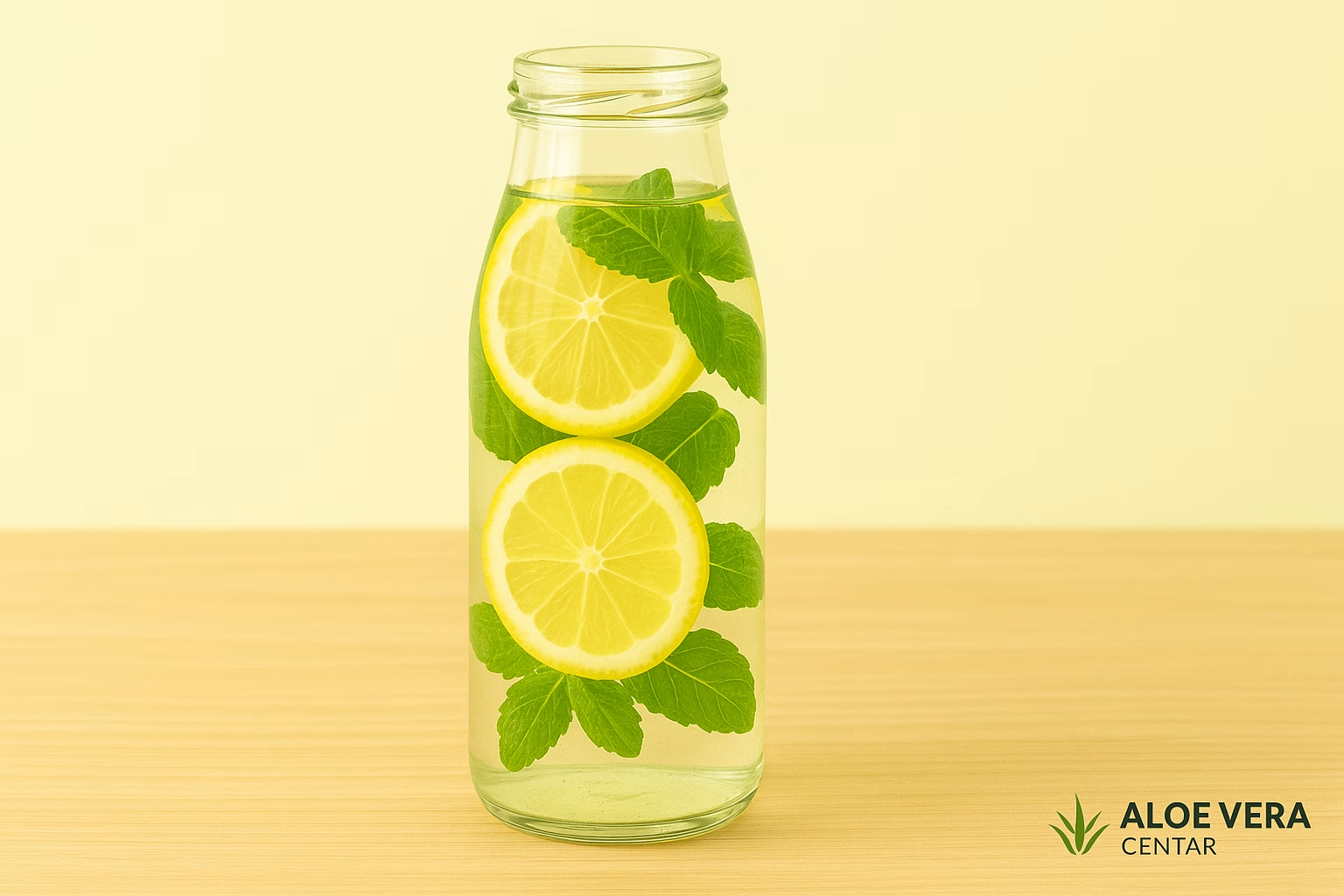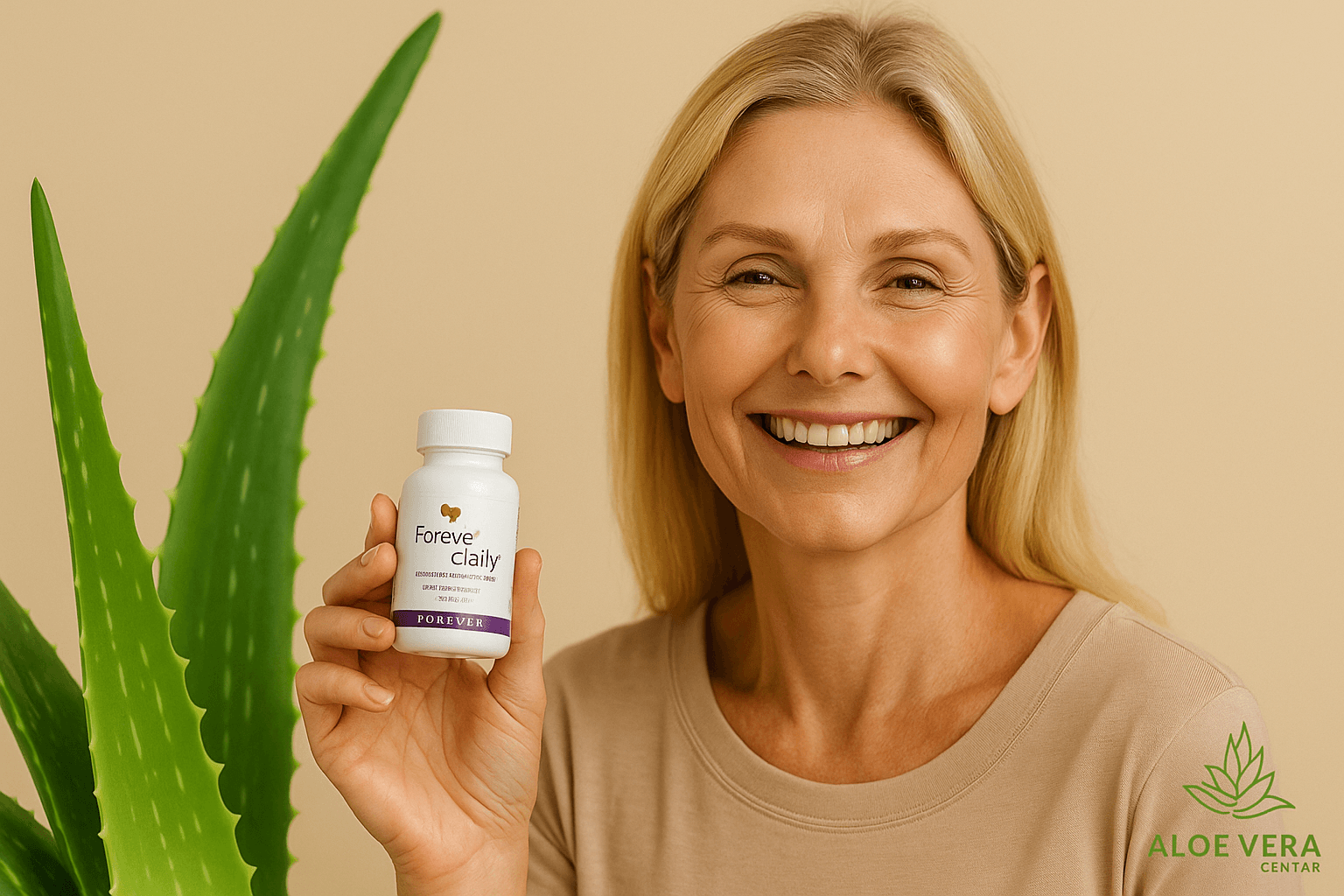
Painful menstruation (dysmenorrhea): ginger, turmeric and heat for relief
Painful menstruation (dysmenorrhea): Ginger, turmeric and heat
Painful menstruation is often an unpleasant companion for many women between the ages of 30 and 55. You may wonder why this time of the month sometimes has to be so exhausting? Have you ever tried to relieve cramps naturally with the help of home remedies like ginger, turmeric and heat packs? These are exactly the tricks and additional solutions that this article is about. In the following lines, we will explore the mechanism of painful menstruation (dysmenorrhea), why ginger and turmeric are so popular and how simple warmth can “save” you at the worst moment. But that’s not all… Keep reading and find out more tips for improving the comfort and quality of life during your menstrual days.
Why do painful menstruation occur?
Before we even delve into the world of herbal remedies, it’s worth understanding the very background of painful menstruation. Dysmenorrhea refers to cyclical pain in the lower abdomen that occurs just before or during menstruation. The main ‘culprits’ are prostaglandins – substances that stimulate uterine contractions and cause the feeling of cramping. In addition, there are other factors such as hormonal changes, stress and diet that can increase or reduce pain.
Interestingly, hormonal imbalances can sometimes trigger other problems, such as Hormonal Acne or sleep disorders. Many women also notice the psychological impact of menstrual cramps – irritability, lack of motivation or a negative attitude. If you are interested in how to deal with similar moods, it is also worth reading the article Negative Attitude , which offers useful guidelines for relieving such emotional burden.
Here’s the thing: every woman is unique. While some go through menstruation without major problems, others struggle with intense pain. However, there are universal tips that help in most cases. And the three main natural “allies” are ginger, turmeric and heat.
Ginger: a powerful ally against inflammation and pain
Ginger has been known for its anti-inflammatory properties for centuries. Its active compound, gingerol, can help relieve pain and cramps. According to research , ginger has the power to affect prostaglandins, thereby reducing inflammation in the body. This is of utmost importance when it comes to menstrual cramps, since excessive prostaglandin production can increase uterine contractions and lead to more severe cramps.
You can consume ginger as:
- Tea : Boil fresh or dried ginger in water, add lemon and a little honey. If desired, sweeten with natural sweeteners like Forever Bee Honey , which is rich in enzymes and comes from beehives that are of high quality and natural purity.
- Fresh Juice : If you’re a fan of freshly squeezed juices, throw a few cubes of ginger into your blender. With the addition of Aloe Vera drinks, such as Aloe Berry Nectar , you’ll get a nice taste and synergy of healthy ingredients.
- Spices in food : You can add ginger to soups, stews, or stir-fried vegetables. Even small amounts can help relieve pain.
In addition to the physical benefits, ginger can also have a positive effect on your mental state. Many users report that a warm cup of ginger and lemon calms them emotionally – especially when they are at the peak of PMS and prone to anxiety. Speaking of anxiety and mood, you may want to explore how to calm down before bed and reduce stress; in that case, check out the tips in the article Anxiety and Sleep .
Turmeric: the golden powder against inflammation
Turmeric, like ginger, is an ancient spice with powerful anti-inflammatory properties. Its active ingredient, curcumin, has been the subject of many scientific studies , with results showing that it can relieve the symptoms of dysmenorrhea. Sounds too good to be true? Keep reading…
Namely, turmeric:
- Regulates inflammatory processes : Helps reduce levels of cytokines and other inflammatory mediators.
- Promotes circulation : Better circulation can lead to less fluid retention and less swelling before menstruation.
- Anti-stress : Turmeric is also known as a “brain-nourishing” spice, so it can reduce irritability caused by hormonal fluctuations.
You can include turmeric in your diet through so-called “golden milk” (warm milk with turmeric, ginger, and cinnamon) or add it to various dishes. For an enhanced effect, combine it with black pepper, which further increases the bioavailability of curcumin.
Heat as a physical method of relief
How many times have you found yourself hugging a hot water bottle or a warm blanket when you’re ‘caught’ by menstrual cramps? Heat is a classic, yet extremely effective way to relieve menstrual pain. Namely, heat relaxes the uterine muscles and reduces tension throughout the body. At the same time, it promotes better blood circulation, which can facilitate the release of prostaglandins and improve the flow of oxygen to the tissues.
Simple examples of heat applications include:
- Warm hot water bottle : Place it on your lower abdomen and try to relax with calm music or a good book.
- Warm bath : Add a few drops of lavender essential oil, and if you like, throw in some natural additives like Natural Body Scrub – ideal for a gentle muscle massage.
- Warm compresses or towels : If you don’t have a hot water bottle, warm a clean towel and gently place it over your abdomen. Be careful not to get it too hot to avoid irritating your skin.
By the way, if you struggle with sore joints or stiffness during your period, you may also benefit from a gentle massage with a cream like Aloe MSM Gel . A gentle massage of your lower back with this gel, which is popular for its combination of aloe vera and MSM, can provide additional relief. Of course, always listen to your body and adjust the temperature or pressure you use.
Additional tips for relieving menstrual pain
But that’s not all. Many women want to round out their approach to painful periods with more tips and techniques. Let’s look at some additional recommendations that can complement the effects of ginger, turmeric, and heat packs.
1. Dietary supplements for balance and energy
Deficiencies in certain vitamins and minerals can further exacerbate symptoms. For example, Forever B12 Plus can support normal red blood cell formation and reduce fatigue, while Forever Arctic Sea Omega can help maintain normal levels of omega-3 fatty acids, which have anti-inflammatory effects.
If you are a family person with children, you know how important it is for them to get the right support for their health. It is also worth mentioning Forever Kids as multivitamin candies for children – well, they are not there for menstrual pain, of course, but they can be part of an overall family healthy eating routine.
2. Sufficient fluid intake
Hydration is crucial, especially if you are taking natural diuretics like ginger or turmeric. Drinking water or drinks like Aloe Vera Juice can be a good way to stay hydrated. In addition, regular fluid intake helps flush out toxins that can build up during menstruation.
3. Physical activity and stretching
Although exercise may be the last thing on your mind when you’re suffering from painful cramps, taking a brisk walk or doing yoga can help improve circulation and release endorphins. Even breathing exercises can calm your nervous system and help you feel more confident and stable as you deal with the pain.
4. Establish a positive routine
Emotional state is directly related to physical feelings. If you are constantly under stress, consider habits to maintain mental balance. You can, for example, use meditation techniques or read inspirational texts such as The Power of Positive Belief or How to Succeed in Life . Also, a good “catalyst” for positive changes can be a mini-project you work on at home, such as recording your cycle or writing a gratitude journal.
5. Use an AI advisor or get a discount on your order
Although it sounds futuristic, technology is here to make our lives easier. You can use the AI advisor for additional personalized advice on nutrition or general health, especially if you don’t have time to do your own research. Also, if you’re looking to get natural supplements or products, consider getting a 15% discount on your order. This way, you’ll get high-quality products at a more affordable price.
The importance of a holistic approach
Painful menstruation is not only a physical condition, but also a psychological one. It is not uncommon for feelings such as anxiety, insomnia, or poor concentration to occur. Therefore, it is important to look at the situation from a broader perspective:
- Proper nutrition : In addition to ginger and turmeric, enrich your menu with whole grains, fruits, and vegetables.
- Hormone balance : If the pain is intense, you may also want to consider seeing a specialist, especially if you suspect disorders like endometriosis.
- Emotional support : Talk to family and friends. Sometimes it’s incredibly important to open up and say, “Today is hard for me.”
- Regular check-ups : Don’t rely solely on self-help methods. Visit a gynecologist and have regular check-ups to be sure of the exact cause of your pain.
If you tend to avoid pain and worry about unpleasant situations in advance, think about how important motivation can be. Some simply underestimate the mental frame of mind and its role in relieving pain or at least coping with it better.
Frequently asked questions
How does ginger specifically relieve cramps?
Ginger contains compounds that affect prostaglandins and anti-inflammatory processes in the body, thus reducing inflammation and easing the intensity of cramps that occur during menstruation.
Can I use turmeric capsules instead of fresh root?
Yes, you can. Many capsules or tablets are a good source of curcumin. However, it is always a good idea to check the label to be sure of the dosage and purity of the product. Also consult your doctor or pharmacist, especially if you are already taking other medications.
Does heat only help for a short time or is the effect permanent?
Heat relieves symptoms while you apply it directly, as it relaxes muscles and stimulates circulation. The effects may last for some time after the heat source is removed, but this depends on the severity of the pain and the individual’s reaction.
What are the main indicators that the pain is not “normal” and that I should see a doctor?
If you experience severe pain that interferes with daily activities, heavy bleeding, dizziness, or vomiting, be sure to see a gynecologist. Such symptoms may indicate other health problems, such as endometriosis or fibroids.
Painful menstruation and the conclusion of the article
Painful periods don’t have to be a “doomsday” for a few days of suffering each month. For many women, a combination of ginger, turmeric, and heat packs can bring relief, along with supplements like Forever Arctic Sea Omega or Forever B12 Plus . Also, a balanced diet, plenty of rest, regular exercise, and a healthy mental attitude are key elements of taking care of your body as a whole.
To further personalize your approach, try our AI advisor . It can offer you ideas for recipes, exercise, or supplements. And if you’re ready to try new products or replenish your supplies, don’t forget to get 15% off your order and equip yourself with everything you need for a more comfortable menstrual cycle.
Disclaimer: This article is for informational purposes only and is not a substitute for professional medical advice. If your menstrual pain is severe and affecting your quality of life, please consult a doctor or specialist.

